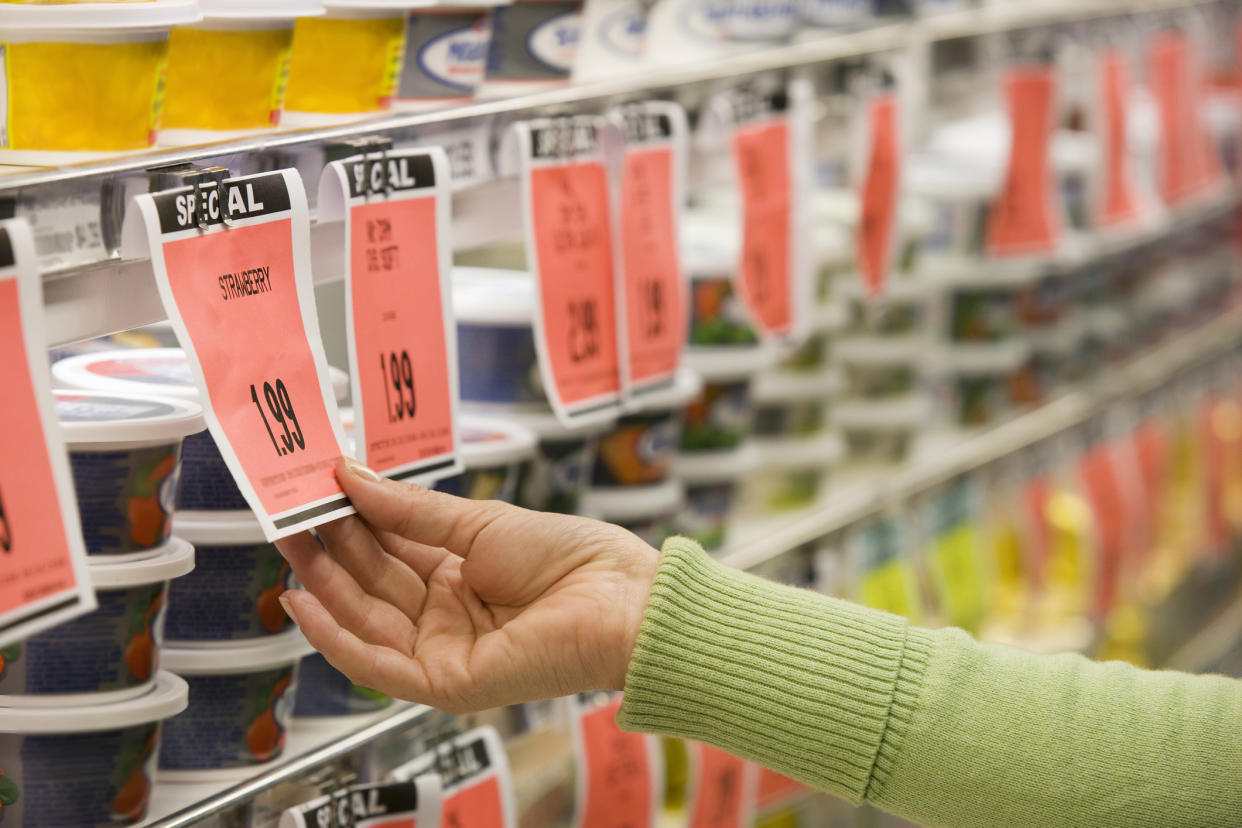Three common flyer marketing tactics we all fall for

Two for $4. Buy one get one free. Free $100 gift card with purchase.
Retailers use a lot of tactics in flyers to get you in store to spend your hard-earned cash, but experts say you need to be savvy to ensure you’re getting the best deal.
Even in today’s internet age, traditional flyers are still a significant way some Canadians — particularly those in urban areas and with young families — stay on top of deals, according to advertising and marketing expert and University of Toronto professor David Soberman.
However, in those flyer pages retailers use several tricks in hopes of getting you to spend more than what you might have initially anticipated.
Tactic #1: Restrict sale prices for purchase of multiple items
Those grocery store deals where you might have to buy two or three of an item to get them at a certain price might work out to being not as great of a deal as you might think.
“A lot of these are just different ways of putting lipstick on a pig to some degree,” Soberman tells Yahoo Canada Finance. “When you make something sound really good, you’re hoping people react to it.”
Some retailers are hoping that you won’t do the math to find out the sale price might not be as good as the store down the block.
And part of the reason retailers go with those pricing schemes is to get their deals to stand out from the pack.
“If everyone says $1 off, then well, you’re not going to be noticed,” Soberman adds. “But if you say buy three and get one free — that effectively works to a dollar off because each product is a dollar — then the whole point is that it might sound better to somebody and be more attractive.”
Tactic #2: Gift cards instead of discounts
Instead of giving you a big discount on an item, they may choose to give a gift card instead. It’s something Soberman says gives stores the benefit of anticipating another visit from the same customer.
“If I give just a 10 per cent discount, it’s basically the same thing except that I haven’t guaranteed that the person will come back,” he says. “Gift cards are a very effective loyalty tool to at least get one more visit from that shopper.”
If you can stomach not being able to go to another retailer with the savings, the benefit you might get from gift cards can be substantial. Gift cards that come with new cell phone activations, for example, can go up to several hundred dollars.
Tactic #3: Low, low prices on loss leaders
If you think you’re seeing the same items on sale for the same price week after week, you’re not imagining things. Soberman says it’s typical for common grocery items like milk, bread and soft drinks to be on sale nearly constantly.
“These are the categories where people do price comparisons. That’s why you see certain items on special,” he says.
These products are known in the business as loss leaders. They’re goods retailers don’t mind taking a bit of a financial hit on in hopes that customers will come in stores to spend money on other items.
The prices for these items may fluctuate slightly from week to week in part to keep in line with competitors and to not get customers too used to the lower price.
“You don’t always want to give the biggest discount off because then people get accustomed to it,” Soberman adds. “You want a big discount to look good, but you want a small discount so that if a person isn’t really aware of a cheaper price, it could still be enough to bring them in the store.”
Research: savvy internet use can help you save
To ensure that you’re getting the best deal, Soberman recommends that shoppers use the internet to look up common prices for items they’re shopping for. He says consumers who use flyer apps like Flipp are more motivated to conduct searches to find ways to save.
However, the internet could be a double-edge sword. Author of Worry-Free Money and financial planner Shannon Lee Simmons says the rise of newsletters and digital marketing campaigns have caused some of her clients to spend unnecessarily just because an item happened to be “on sale.”
“In the last five years, this type of marketing combined with technology has made it easier to spend,” she says. “There [are] no moments pause to stop and be like ‘Do I want this?’”
She recommends to keep your distance from marketing online, including unsubscribing from brands that get you to spend.
“Don’t follow them on social or at least be mindful of the affect that they are having,” she says. “Maybe once a week you check in to see what’s going on, rather than every day right in your face on your feed.”
Simmons says, however, that not all sales are bad — just that spending too much on sales may dig into your savings or land you with some bad credit card debt.
“My hope is that we remember when a purchase was unhappy spending: It made us feel blue, resentful, regretful and guilty,” she adds. “If we can recall these emotions when we are staring at a sales page, hopefully we can snap out of ‘I see, I want’ mode and make a mindful decision.”
Download the Yahoo Finance app, available for Apple and Android.


